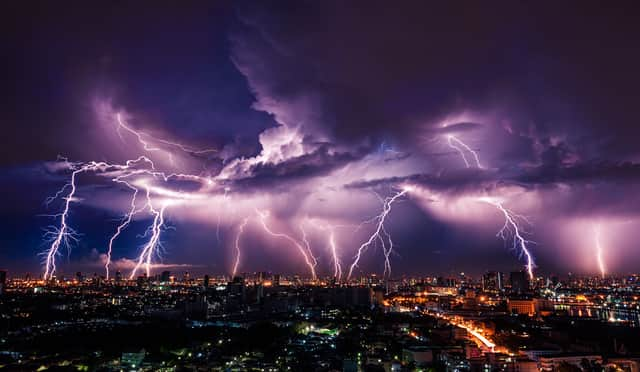16 interesting facts you probably don't know about thunder and lightning


The weather is set to be dramatic, with heavy downpours, thunder and lightning forecast.
All three of these weather conditions are associated with humidity, which has lately been a common occurrence.
Advertisement
Hide AdAdvertisement
Hide AdIt’s widely known that thunder and lightning comes as a package, and that thunderstorms result from a change in atmospheric conditions, but did you know these 16 facts about thunder and lightning?


1. In temperature terms, lightning bolts are around 29,982°C (54,000°F), which is roughly five times hotter than the surface of the sun.
2. The most thundery place on Earth is believed to be Tororo, Uganda, where it thunders 251 days a year.
3. Lightning-strike victims are temporarily covered in what’s known as Lichtenberg figures, which are red branching, tree-like patterns created by the passage of high voltage electrical discharges along the skin.
Advertisement
Hide AdAdvertisement
Hide Ad4. Lightning kills around 2,000 people each year, so it’s always advisable to stay inside during storms, hence the phrase 'when thunder roars, go indoors'.
5. A thunderstorm named ‘Hector the Convector’ forms over Tiwi Islands, Northern Territory, Australia, from approximately September to March every year.
6. An average lightning bolt can release enough energy (around 250 kilowatt-hours) to operate a 100-watt light bulb for more than three months straight
7. Thundersnow is an unusual kind of thunderstorm where snow falls as the primary precipitation instead of rain.
Advertisement
Hide AdAdvertisement
Hide Ad